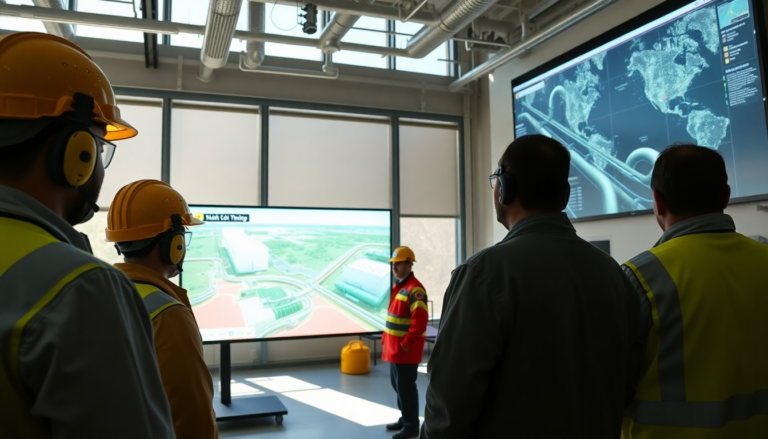Argomenti trattati
In an exciting development for pipeline safety training, the Texas A&M Mary Kay O’Connor Process Safety Center (MKO) has partnered with EnerSys Corp. to create a cutting-edge multiplayer training platform. This innovative initiative leverages artificial intelligence (AI) and gaming technology to simulate emergency scenarios involving pipelines. Funded by the Pipeline Hazardous Materials Safety Administration and managed by the Texas A&M Engineering Experiment Station, this project aims to empower pipeline operators with realistic, hands-on experiences that are often lacking in conventional training methods.
Transforming pipeline training through simulation
The collaboration between MKO and EnerSys is set to transform the way pipeline operators prepare for emergencies. By using a game-like environment, the platform allows trainees to engage in simulated real-world scenarios of pipeline failures. This immersive approach not only makes training more engaging but also offers operators a chance to experience high-pressure situations in a controlled setting. Given that actual pipeline incidents are rare, this form of training is invaluable for enhancing operators’ skills and confidence.
The role of AI and gaming technology
At the core of this innovative platform is the integration of AI and gaming technology, which creates a dynamic learning environment. Operators will engage with advanced simulations that mimic the complexities of actual pipeline operations. As EnerSys Corp. CEO Russel Treat noted, the goal is to make the training experience as close to real-life situations as possible. This way, when operators find themselves facing a real emergency, they will be better prepared to respond swiftly and effectively.
Collaboration for enhanced safety
MKO is bringing its scientific expertise and mathematical modeling of pipeline behavior to the project, while EnerSys leads industry collaboration and data collection efforts. This partnership ensures that the training platform is not just a technical endeavor, but a comprehensive approach to improving pipeline safety. By integrating the lessons learned from various industrial experiences, the team aims to develop tools that will significantly enhance the safety protocols of pipeline operations.
Preparing for real-world incidents
The ultimate objective of this training platform is to equip operators to handle real incidents more effectively. With improved training, the hope is to minimize the impact of pipeline failures on both infrastructure and the economy. The project is set to begin trial scenarios with a dedicated research and development team by the end of the year, marking a significant step forward in training methodologies.
Learning from experience
Faisal Khan, director of the Mary Kay O’Connor Process Safety Center, expressed enthusiasm for the opportunity to learn from industrial experiences. The aim is to create a fusion of knowledge that not only enhances the training experience but also ultimately leads to better safety outcomes. With this innovative training platform, the future of pipeline safety looks promising, as operators will be better equipped to face the challenges that come with their critical role.
Get involved in the future of training
As this project progresses, there will be opportunities to engage with the evolving training system. Those interested in pipeline safety and training methodologies can look forward to updates and insights from the development team. This initiative stands as a testament to how technology can be harnessed to improve safety standards in industries that are vital to our infrastructure.

